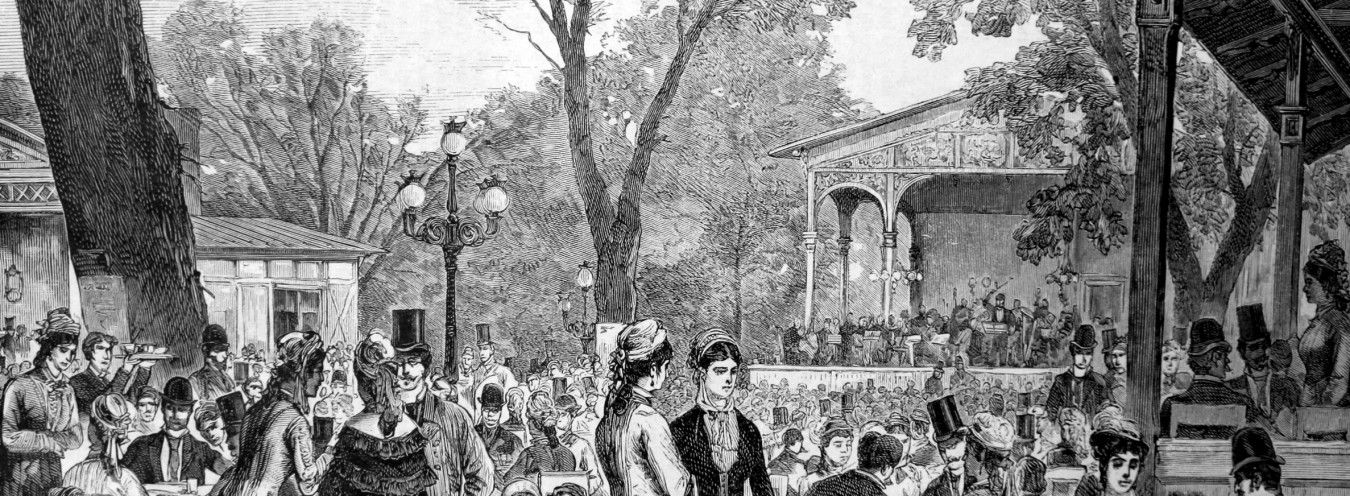
Dolina Szwajcarska (Swiss Valley Park)
They sat together another fifteen minutes, talking of an entertainment for charitable purposes held in the ‘Swiss Valley.’ (235)
In 1825, Stanisław Śleszyński set up a fruit garden covering the area of 4.5 hectares in the pit remaining after the brickyard in Aleje Ujazdowskie. The following year, he added a multi-storey palace designed by Antonio Corazzi. Finally, in 1827, Śleszyński opened a beautifully designed garden with flower beds and Swiss-style gazebos (hence the name Swiss Valley) to the public, who could enjoy themselves, rest, eat sausages, and drink beer while listening to music. Thirty years later, the new owners, the Dziechcińskis and Winnickis built the Salon Wielkiej Alei, a great concert hall, which hosted such musicians as Johann and Eduard Strauss, Ignacy Paderewski, or Władysław Sygietyński. In the 1881 guide, it is mentioned that in winter, in the great hall in Swiss Valley are held masquerade balls, mostly attended by women of the local underworld. According to the gilded youth of Warsaw, these parties are highly enjoyable. In the summer in the garden, an orchestra played the rhythms of traditional Polish dances, such as the mazurka, the krakowiak, and the kujawiak, for the entertainment of strolling visitors. People could also take part in raffles organised by charity institutions. The events in the garden drew a wide audience. For the admission fee of 35 kopeks, one could listen to symphonic concerts on Wednesdays and Saturdays and to a lighter repertoire on remaining days. In 1874, a playground for children, the so-called “New Switzerland” was opened, and it attracted many visitors with performances of magicians, jugglers, fire eaters, and its own children’s theatre. Although in the days of Bolesław Prus, the “Swiss Valley” was very popular with Varsovians, it is mentioned only once in The Doll, in a conversation between Wokulski and the Łęckis.
Bibliografia
- Grand Hôtel d’Europe Varsovie. Przewodnik po Warszawie wydany staraniem Wielkiego Hotelu Europejskiego w czterech językach, Warsaw 1881.
- Z. Kozak-Wawrzyńska, Kultura muzyczna Warszawy jako tło działalności Instytutu Muzycznego w latach 1879-1901, Warsaw 1961.



